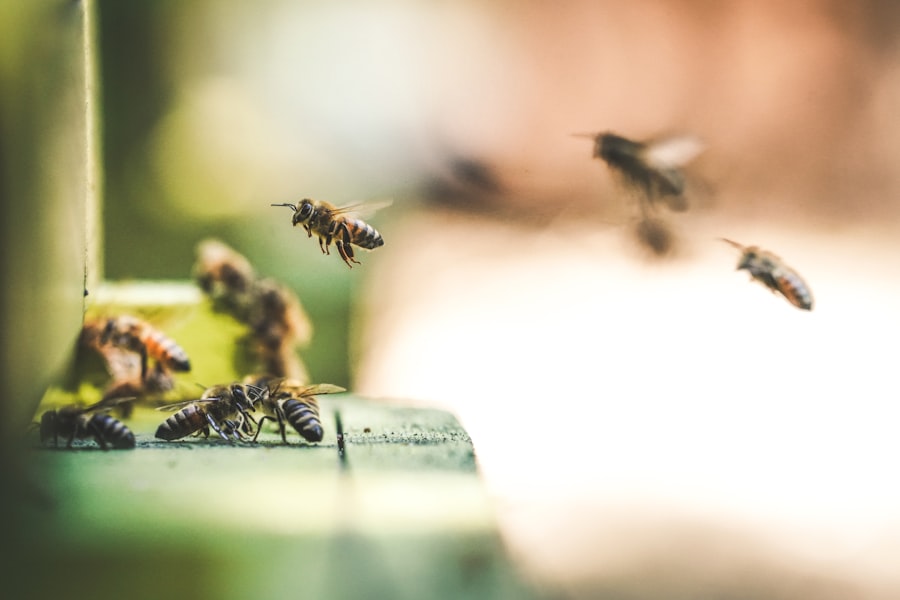In the realm of insects, wasps and bees often evoke a sense of fear and confusion among homeowners. While both belong to the Hymenoptera order, their behaviors, appearances, and ecological roles differ significantly. Wasps are typically more slender and have a smooth body, often exhibiting bright yellow and black coloration.
They are known for their aggressive nature, especially when their nests are threatened. In contrast, bees are generally more robust, with hairy bodies that help them collect pollen. Their primary role in the ecosystem is pollination, making them vital for the health of many plants and crops.
Understanding these differences is crucial for homeowners who discover a nest within their walls. Misidentifying a wasp nest as a bee nest can lead to unnecessary panic or improper handling of the situation. Wasps tend to build their nests in sheltered areas, including eaves, attics, and even within walls, while bees prefer to create hives in more open spaces.
Recognizing these distinctions not only aids in effective management but also fosters a greater appreciation for these insects’ roles in nature.
Key Takeaways
- Understanding the physical differences between wasps and bees is crucial for effective pest control.
- Determining the size and location of the nest is essential for planning safe removal.
- Protecting yourself and others from stings should be a top priority during DIY removal.
- Safely removing the nest requires proper techniques and precautions to avoid aggravating the insects.
- Seeking help from a pest control expert is necessary for large or hard-to-reach nests.
Assessing the Situation: Determining the Size and Location of the Nest
Signs of a Nest
Homeowners should look for signs such as a steady stream of insects entering and exiting a particular spot, which can indicate the presence of a nest nearby. The size of the nest can also provide valuable information about the potential threat it poses.
Assessing the Threat
A small nest may indicate that it is newly established, while a larger one suggests that it has been active for some time and could house hundreds of wasps or bees. Understanding the location of the nest is equally crucial; nests situated in hard-to-reach areas or close to frequently used spaces pose a greater risk to individuals nearby.
Proceeding with Removal or Management
By carefully assessing these factors, homeowners can make informed decisions about how to proceed with removal or management.
Safety Precautions: Protecting Yourself and Others from Stings

Safety should always be a top priority when dealing with wasps or bees. These insects can become aggressive if they feel threatened, leading to painful stings that can cause allergic reactions in some individuals. Homeowners should take several precautions to protect themselves and others from potential stings.
First and foremost, it is advisable to wear protective clothing when approaching the area where the nest is located. Long sleeves, pants, gloves, and even a face mask can provide an extra layer of defense against stings. Additionally, timing is crucial when attempting to manage a nest.
Wasps and bees are less active during cooler parts of the day, such as early morning or late evening. Approaching the nest during these times can minimize the risk of provoking the insects. Homeowners should also consider informing family members or neighbors about the situation to ensure that everyone remains vigilant and avoids the area until it is safe to do so.
By taking these safety precautions seriously, individuals can significantly reduce the likelihood of an unpleasant encounter with these insects.
DIY Removal: Tips and Techniques for Safely Removing the Nest
| DIY Removal Tips | Techniques |
|---|---|
| Wear protective clothing | Use gloves, long sleeves, and a mask to protect yourself from stings and allergens |
| Identify the nest | Locate the nest and observe the activity to determine the best approach for removal |
| Use insecticidal spray | Apply a recommended insecticidal spray to the nest from a safe distance |
| Wait for activity to cease | Allow time for the insects to die off before attempting to remove the nest |
| Remove the nest carefully | Use a plastic bag or container to carefully remove the nest and dispose of it properly |
For those who feel confident in their abilities, DIY removal of a wasp or bee nest can be an option. However, it is essential to approach this task with caution and preparation. One effective method involves using insecticidal sprays specifically designed for wasps and bees.
These sprays typically have a long reach, allowing homeowners to apply them from a safe distance without getting too close to the nest. It is crucial to follow the manufacturer’s instructions carefully to ensure effectiveness and safety. Another technique involves using a vacuum cleaner equipped with a hose attachment to remove smaller nests.
This method requires extreme caution; homeowners should wear protective gear and ensure that they are prepared for any angry insects that may escape during the process. After vacuuming, it is advisable to seal the vacuum bag tightly and dispose of it outside immediately. Regardless of the method chosen, homeowners should remain aware of their surroundings and be prepared to retreat if necessary.
Calling in the Professionals: When to Seek Help from a Pest Control Expert
While DIY removal may be suitable for some situations, there are instances when calling in professionals is the best course of action. If a nest is particularly large or located in a challenging area, such as inside walls or high up on a roof, it may be wise to seek help from pest control experts. These professionals possess specialized training and equipment that allow them to handle nests safely and effectively.
Additionally, individuals who have experienced allergic reactions to insect stings should never attempt removal on their own. The risk of being stung is too great, and professionals can manage the situation with minimal risk to health and safety. Pest control experts can also provide valuable advice on preventing future infestations, ensuring that homeowners can enjoy their living spaces without fear of unwelcome guests.
Preventing Future Infestations: Sealing Entry Points and Deterrents

Sealing Entry Points
One of the most effective strategies involves sealing entry points around the home where wasps or bees may gain access. This includes inspecting areas such as vents, gaps around windows and doors, and any cracks in walls or foundations. By sealing these openings with caulk or other appropriate materials, homeowners can significantly reduce the likelihood of insects finding their way inside.
Deterrents and Repellents
In addition to sealing entry points, homeowners can employ various deterrents to keep wasps and bees at bay. Planting certain herbs like mint or using essential oils such as peppermint can create an unwelcoming environment for these insects.
Decoy Nests and Secure Living
Additionally, hanging decoy nests can trick wasps into believing that another colony has already claimed territory in the area, discouraging them from establishing their own nests nearby. By implementing these preventive measures, homeowners can create a more secure living environment.
Dealing with Aftermath: Cleaning and Repairing the Wall
After successfully removing a nest from within a wall, homeowners must address any damage caused during the process. Cleaning up after removal is crucial not only for aesthetic reasons but also for health considerations. Residual insect debris or pheromones left behind can attract other pests if not properly cleaned.
Homeowners should thoroughly clean the area using appropriate cleaning solutions to eliminate any traces of the nest. In cases where significant damage has occurred to walls or insulation due to nesting activity, repairs may be necessary. This could involve patching holes or replacing sections of drywall that were compromised during removal efforts.
Ensuring that these repairs are made promptly will help maintain the integrity of the home while preventing future infestations from occurring in those same areas.
Educating Others: Spreading Awareness and Knowledge about Wasps and Bees in Walls
Finally, spreading awareness about wasps and bees is essential for fostering understanding within communities. Many people harbor misconceptions about these insects, often viewing them solely as pests rather than recognizing their ecological importance. By educating others about the differences between wasps and bees, as well as safe removal practices, individuals can contribute to a more informed public.
Community workshops or informational sessions can serve as platforms for sharing knowledge about these insects’ roles in pollination and biodiversity. Additionally, providing resources on how to identify nests and safely manage them can empower individuals to handle situations effectively without resorting to harmful methods. By promoting awareness and understanding, communities can work together to coexist peacefully with these vital creatures while ensuring safety within their homes.
If you suspect that there are wasps or bees living in the walls of your home, it is important to address the issue promptly to avoid any potential hazards. According to a recent article on bathroom makeover ideas that add instant value to your home, pests like wasps and bees can cause damage to your property and pose a threat to your family’s safety. Be sure to contact a professional pest control service to safely remove the insects and prevent them from returning.
FAQs
What are the differences between wasps and bees?
Wasps and bees are both flying insects, but they have distinct physical and behavioral differences. Wasps are typically slender with smooth bodies and narrow waists, while bees are more robust with hairy bodies. Additionally, wasps are known for their aggressive behavior and can sting multiple times, while bees are generally more docile and can only sting once before dying.
Why do wasps and bees build nests in walls?
Wasps and bees often build nests in walls because the enclosed space provides protection from the elements and predators. Additionally, the warmth and darkness of the wall cavity can be an attractive nesting site for these insects.
How can I tell if I have wasps or bees in my walls?
The presence of wasps or bees in walls can be identified by the sound of buzzing or scratching coming from within the wall, as well as the appearance of insects entering and exiting the wall through small openings. It is important to accurately identify the species in order to determine the best course of action for removal.
What are the risks of having wasps or bees in walls?
Having wasps or bees in walls can pose several risks, including the potential for stings and allergic reactions, damage to the structure of the wall, and the attraction of other pests. It is important to address the issue promptly to mitigate these risks.
How can I safely remove wasps or bees from my walls?
Removing wasps or bees from walls should be done with caution to avoid provoking the insects and risking stings. It is recommended to seek the assistance of a professional pest control service to safely and effectively remove the nest and address the infestation.






